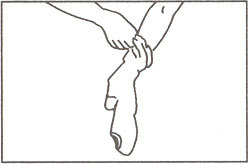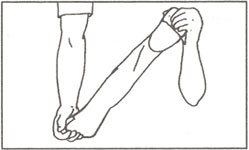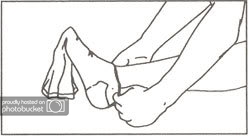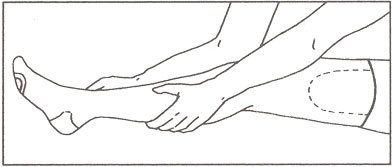T.E.D. Stockings Help Treat Deep Vein Thrombosis
T.E.D. stands for ThromboEmbolic Disease. The stockings were invented to prevent it. Your doctor may have prescribed you T.E.D. stockings to help prevent several serious health risks. Deep vein thrombosis (DVT) is one such condition. A deep vein thrombosis is a blood clot (thrombus), which develops in a deep vein, usually in the leg. This condition can occur if the vein is damaged, or if the flow of blood slows down, or stops completely. DVT can cause pain in the leg, and can lead to complications if it breaks off and travels in the bloodstream to the lungs. Where does DVT Occur? There are two types of veins in the legs: deep and superficial. The deep veins pass through the center of the leg and are surrounded by muscles. DVTs are also present in the arm or pelvis, but they are less common than in the leg. How Does One Develop a DVT?
DVTs are common in individuals over 40, those who are extremely overweight, or those who have a history of developing a DVT in the past. In some cases, inherited conditions make the blood more likely to clot than usual, which increases the risk substantially. Other factors include:
- Prolonged bed rest or immobility
- A major injury or paralysis
- Surgery that involves the leg joints or pelvis
- Cancer and its treatments, which can cause the blood to clot more easily · Long-distance travel or prolonged immobility.
- Pregnancy and childbirth-related hormonal changes that make the blood clot more easily
- Hormone replacement therapy (HRT)
- Other circulation or heart problems
Problems Caused By DVT
If a DVT is developed below the knee, there is a great chance that it will cause no complications. However, it a clot forms above the knee, there is a higher risk that it will break away and travel up the vein to block a vessel in the lung. This is called a pulmonary embolism (PE). Depending on the size of the clot, it can be life threatening.
How Do T.E.D. Stockings Help In The Treatment of DVT?
T.E.D. stockings are long, tight fitting "socks" that keep mild pressure on the legs to prevent blood from clotting. They prevent blood from sitting idle in the legs, which can lead to clots. T.E.D. stockings should be worn during inactive times after surgery, on airplanes, or often if the patient has a history of poor circulation. How To Put On Your T.E.D. Stockings
1. Insert hand into Stocking as far as the heel pocket.

2. Grasp the center of the heel pocket and turn Stocking inside out to heel area.


3. Position the Stocking over the foot and heel, taking care to center the heel in the heel pocket.


4. Pull Stocking up and around the ankle and calf, working up the final position. For Knee Length, top of Stocking should be 1 to 2 inches below bottom of knee cap. For Thigh Length, the stitch change (change in fabric sheerness) should fall between 1 to 2 inches below the bend of the knee, and top band rests on the line at the bottom of the buttocks. Smooth out any excess material.

